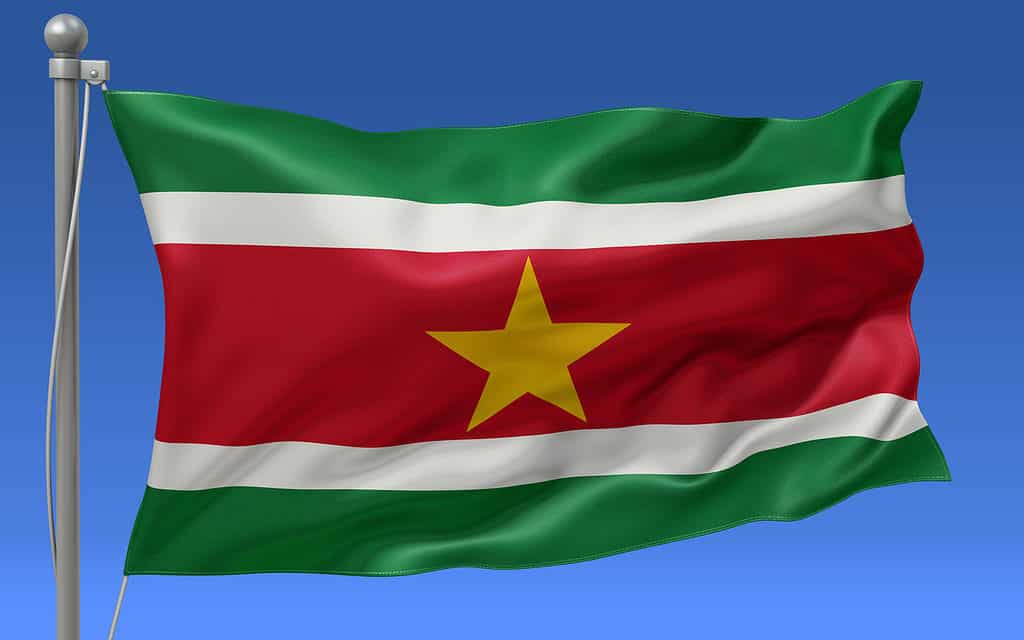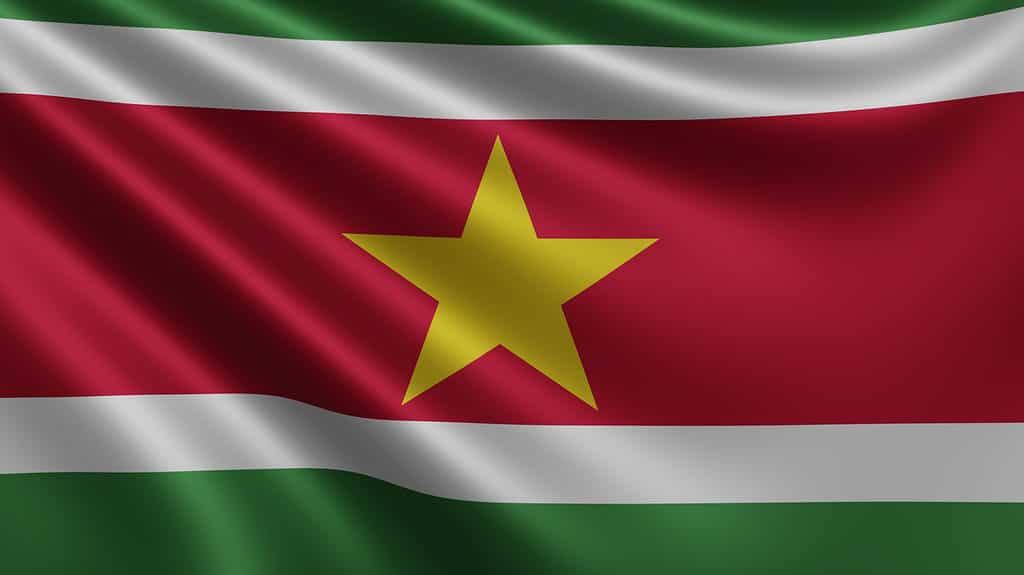Suriname, otherwise called the Republic of Suriname, is located on South America’s northern coast. It is bordered to the north by the Atlantic Ocean, to the east by French Guiana, to the south by Brazil, and to the west by Guyana.
The country is the smallest independent country in South America and is divided into two main geographical regions: the north and the south. Northern Suriname consists mainly of cultivated lowland coastal areas where most of Suriname’s population is settled.
In contrast, Southern Suriname features tropical rainforests and a sparsely inhabited savanna that runs along the Brazilian border. These tropical rainforests account for about 80% of Suriname’s land surface. Also, the country contains six terrestrial ecoregions: Guayanan Highlands, Guianan moist forests, Paramaribo swamp forests, Guianan mangroves, Guianan savanna, and Tepuis.
There are many interesting things to learn about Suriname, including its vast forest cover and biodiversity. Being the smallest independent country in South America, how easily was Suriname colonized? Also, what role does the Suriname flag play in expressing the country’s colonial past and its widely promising future? Keep reading to find out.
Characteristics of Suriname
Suriname is small, only having an area of 64,000 square miles. In the same vein, the country is one of the least densely populated in the world, with a population of approximately 612,985. The greatest percentage of the group is dominated by descendants from the enslaved people and laborers brought into Suriname from the west coasts of Asia and Africa by the Dutch Empire and Republic. About 87% of the people live along the coastal plains in the north, with about 67% living in and around the country’s capital and largest city, Paramaribo.
The Amazon River, located in Brazil, lies east of Suriname. The southern equatorial currents from regions surrounding the mouth of the Amazon River deposit sandbanks and mudbanks on the narrow coastal zone of the country. At the south of the mudbanks lie the New Coastal Plain, also formed from sand and clay from the mouth of the Amazon River.
Although Suriname is the smallest independent country in South America, its population is one of the most ethnically diverse in the region. Suriname is considered a culturally Caribbean country. The official native language is Dutch, spoken by 60% of Surinamese, while Sranan Tongo, an English-based creole language, is widely adopted as the lingua franca.
Founding of Suriname

On the 25th of November 1975, Suriname gained independence.
©iStock.com/Nabil Kamara
Arawaks, Caribs, and Wayana, were among the indigenous peoples who inhabited Suriname as early as the 4th millennium BC. The name Suriname was derived from the most prominent indigenous residents, Surinen, who inhabited the area at the time of European contact. British planters and their slaves began to establish themselves in Suriname in 1651. By 1667, Suriname was seized by a Dutch fleet.
During the Dutch colonial rule, Suriname was renowned as a lucrative sugar-producing economy with operations driven by African slave labor. After slavery was abolished on July 1, 1863, the fields were run by indentured servants from Asia, predominantly from British India, China, Madeira, and the Dutch East Indies. Until the middle of the 19th century, enslaved people, mostly from Africa, constituted the majority of the Surinamese population. In 1948, shortly after World War II, The Netherlands began to provide development aid to Suriname. In the same year, talks on Suriname’s internal political autonomy began, and political parties, including the Nationale Partij Suriname (NPS), the Progressive Suriname Volkspartij (PSV), and the Vooruitstrvende Hervormde Partij (VHP) were established. Then, Suriname joined the Kingdom of Netherlands in 1954 as a constituent country.
Eventually, on the 25th of November 1975, Suriname gained independence from the Kingdom of the Netherlands. Even after its independence, Suriname maintains close diplomatic, economic, and cultural ties with the Netherlands.
History and Symbolism of the Flag of Suriname

The yellow five-point star in the center of the flag was chosen in memory of the sacrifices made by the people of Suriname to attain independence.
©iStock.com/IFest
The Suriname national flag, designed by art teacher and graphic designer Jack Pinas, was adopted on the 25th of November, 1975, the same day the country gained independence. The design came following a national design competition organized by the parliament. The Suriname parliament accepted the winning design in 1975 upon Suriname’s independence. However, some changes to Pinas’ design were made.
The revised design consists of five unequal horizontal stripes of green, white, red, white, and green, with a central yellow five-pointed star. The green horizontal band occupies the top and bottom of the flag. Two thin white bands come right after the green bands on both ends, while the red band lies in the middle of the flag. The yellow star lies at the heart of the red band, which also coincides with the flag’s center.
The green bands on the flag symbolize the richness of Suriname’s agricultural lands. The white horizontal bands represent peace, freedom, and independence from the Dutch. The red band at the center is a symbol of love, progress, and hope. The yellow five-point star in the center of the flag was chosen in memory of the sacrifices made by the people of Suriname to attain independence. It also signifies the country’s unity and bright future. The different colors used in the flag also represent the Suriname political parties.
Before the new and current flag, Suriname had seen many flags come and go since the Kingdom of the Netherlands was established in 1815. The Dutch tricolor was first adopted in the Dutch colony of Suriname as Suriname’s first official flag from 1815 to 1959. A new flag with the Dutch tricolors and the Surinamese Coat of Arms was also proposed but never implemented.
In 1959, Noni Lichtveld’s design for the pre-independence flag of Suriname was adopted. This flag featured a plain white field with five multi-colored stars resting on a black ellipse. Each colored star was chosen to represent an ethnic race living in Suriname. The white star represented the white Europeans; the black star represented the Creoles; the brown star represented the Indians; the red star represented the American Indians; and the yellow star represented the Chinese. In 1975, Suriname was granted independence from the Dutch, and its new flag was introduced and adopted.
Up Next:
- Animals in Suriname
- The Flag of Guyana: History, Meaning, and Symbolism
- Every Flag In The World: Photos, History, and More
The photo featured at the top of this post is © iStock.com/Hermsdorf
Thank you for reading! Have some feedback for us? Contact the AZ Animals editorial team.






